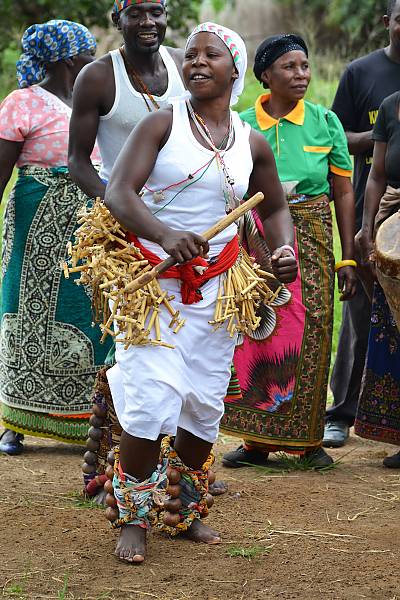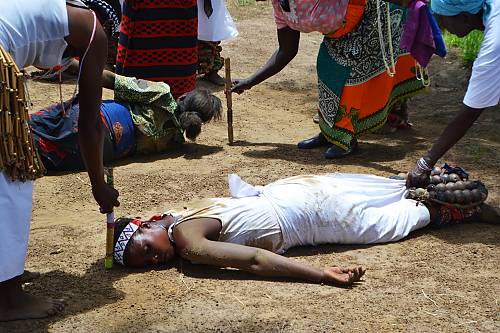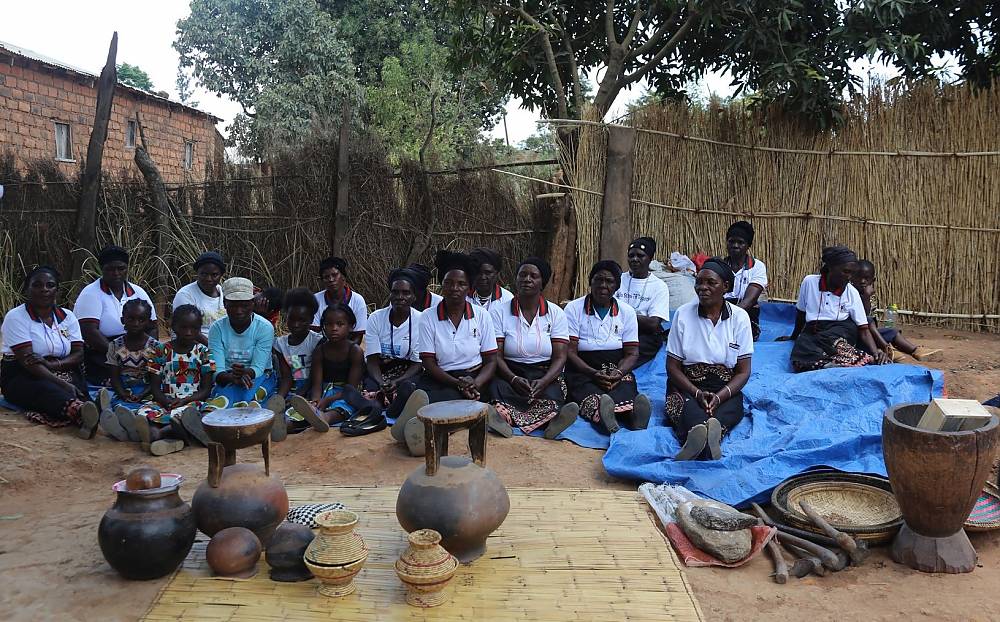Zambia
There are many different types of dances used by different tribes. Most peoples and tribes dance to chase the devil or for personal fulfillment.
Most dances usually have boys and girls; only chitelele is dancing by women in chiefdom of Mfumbeni (eastern part of Zambia).
List Of Dances
Gule Wamkulu Mozambique, Malawi, Zambia, Zimbabwe
*![]() Mooba Zambia
Mooba Zambia
Vimbuza Malawi, Zambia
*![]() Mangwengwe Zambia
Mangwengwe Zambia
Chitelele
Kalela
Muchoma
Ndendeule
Ngoni
Nyakasanga
Pantomime
Mooba


Mooba is the main dance of the Lenje ethnic group of Central Province of Zambia,
performed since pre-colonial times. It is also practised in parts of Copperbelt and Lusaka Provinces,by both men and women. On certain occasions, when the dance reaches its peak, some lead dancers are possessed by ancestral spirits called BaChooba; it is said that, at this point, the spirits take the lead in dictating the flow of the dance, drumming and singing. Both male and female dancers can be
possessed with BaChooba spirits.
The costume includes coloured beads, a traditional skirt called a Buyombo, and rattles worn around the calves. In addition, the main dancers hold a spiritual stick known as a Chimika and a fly whisk made out of an animal’s tail. Mooba serves both entertainment and healing functions, and contributes to the spiritual identity of the community. Since the elementis performed during social functions that are open to the public, children can observe and learn it freely, with performances attracting a wide audience thanks to their entertaining nature. Almost
every adult knows the Mooba dance as it is the main dance of the Lenje people. The Lenje community has also established groups that perform wherever they are invited, helping to promotethe practice further afield.
Inscribed in 2018 on the Representative List of the Intangible Cultural Heritage of Humanity of UNESCO,
References
UNESCO: Read
ZAMBIA
Region:
Central Province
Ethnic group:
Lenje
Mangwengwe
The Mangwengwe is a traditional dance that is performed by the Mambwe and Namwanga people of Zambia. Dating to pre-colonial times, it is characterized by circular movements of the shoulders and sometimes waist. The performance involves a lead singer or dancer, supporting singers and dancers, hand-clappers and musicians. The rhythm is set by the rubbing of wooden stools against the bottoms of clay pots. Most of the singing, dancing and clapping is performed by women, with men occasionally participating on special occasions. Practitioners compose their own songs, which generally describe everyday life, the land, leaders, and current events. The Mangwengwe dance is reserved for important events such as weddings, funerals and traditional ceremonies. Notably, it is the only dance performed at the funeral and burial of a chief. It is also featured in political gatherings to praise or critique political and civic leaders and to communicate their challenges and successes.
ZAMBIA
Spirituality:
traditional
Ethnic group:
Mambwe
Namwanga

